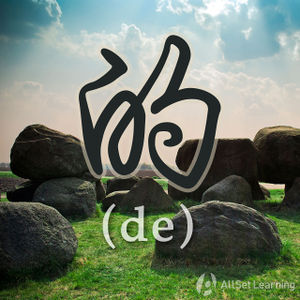Difference between revisions of "Expressing possession with "de""
m |
|||
| Line 3: | Line 3: | ||
In Chinese, possession is marked with the particle 的 (de), placed after the associated noun or noun phrase. This particle works in a similar way to ''''s''' (apostrophe "s") in English, but is used much more widely. This article highlights one of its simplest and most common usages. | In Chinese, possession is marked with the particle 的 (de), placed after the associated noun or noun phrase. This particle works in a similar way to ''''s''' (apostrophe "s") in English, but is used much more widely. This article highlights one of its simplest and most common usages. | ||
| − | == Structure == | + | === Structure === |
<div class="jiegou"> | <div class="jiegou"> | ||
| Line 15: | Line 15: | ||
The structure is super simple. It will take a bit of time before you realize how truly universal this pattern is. It doesn't matter whether the "Noun 1" is a person, place, or thing, or even if it's a pronoun (like "he," "she," or "it"). The structure stays consistent. | The structure is super simple. It will take a bit of time before you realize how truly universal this pattern is. It doesn't matter whether the "Noun 1" is a person, place, or thing, or even if it's a pronoun (like "he," "she," or "it"). The structure stays consistent. | ||
| − | == Examples == | + | === Examples === |
<div class="liju"> | <div class="liju"> | ||
Revision as of 05:41, 3 July 2015
-
Level
-
Similar to
-
Used for
-
Keywords
In Chinese, possession is marked with the particle 的 (de), placed after the associated noun or noun phrase. This particle works in a similar way to 's (apostrophe "s") in English, but is used much more widely. This article highlights one of its simplest and most common usages.
Structure
Noun 1 + 的 + Noun 2
This means "Noun 1's Noun 2" (where Noun 2 belongs to Noun 1).
The structure is super simple. It will take a bit of time before you realize how truly universal this pattern is. It doesn't matter whether the "Noun 1" is a person, place, or thing, or even if it's a pronoun (like "he," "she," or "it"). The structure stays consistent.
Examples
- 我 的 老师 my teacher
- 你 的 啤酒 your beer
- 他 的 书 his book
- 他们 的 东西 their stuff
- 小李 的 手机 Xiao Li's cell phone
- 我们 的 茶our tea
- 我 家 的 小狗my family's puppy
- 公司 的 老板the company's boss
- 上海 的 美女Shanghai's beautiful women
- 美女 的 朋友the beautiful woman's friend



